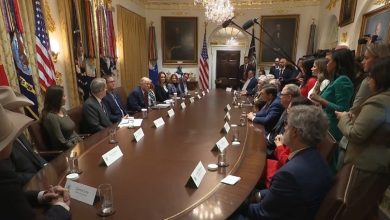Purchasing Power of Arab and Muslim Immigrants in the United States: Trends, Challenges, and Growth
How a Growing Community Is Shaping U.S. Markets Through Business, Education, and Cultural Spending.

The Arab and Muslim immigrant communities in the United States have experienced significant growth in numbers and economic influence over the past few decades. As these populations have become more established, their purchasing power—defined as their ability to buy goods and services—has steadily increased. This article explores the economic contributions, spending habits, income levels, and challenges facing Arab and Muslim immigrants in the U.S., with a focus on verified studies and socio-economic trends.
1. Demographic and Economic Overview
According to data from the Pew Research Center and the U.S. Census Bureau, there are approximately 3.5 to 4 million Arab Americans and an estimated 3.85 million Muslims living in the U.S. (as of 2024). These communities overlap but are not identical—many Arab Americans are Christian, and many Muslims in the U.S. are of South Asian or African origin.
Key Demographics:
-
Concentrated in states like California, Michigan, New York, Texas, and Illinois
-
Highly urbanized communities, often based in cities like Dearborn (MI), Anaheim (CA), Brooklyn (NY), and Houston (TX)
-
ncreasingly composed of professionals in healthcare, engineering, IT, retail, and education

2 Income Levels and Employment
While many new immigrants start in low-wage sectors, long-term Arab and Muslim residents often achieve middle or upper-middle-class status. A 2023 report by Zogby Analytics and the Arab American Institute found that:
-
Over 40% of Arab Americans report household incomes above $75,000/year
-
Among U.S. Muslims, nearly 50% have a college degree or higher
-
Many own small businesses, especially in food services, gas stations, retail, and logistics
Occupational Highlights:
-
Doctors and Pharmacists: Especially among Egyptian, Lebanese, and Pakistani immigrants
-
IT and Engineering Professionals: Common among Syrian, Palestinian, and Indian Muslims
-
Entrepreneurs and Franchise Owners: Yemenis and Iraqis, particularly in the restaurant and service sectors
3. Consumer Spending Behavior
Arab and Muslim immigrants tend to be brand-loyal and family-oriented consumers. Their purchasing habits reflect cultural values such as hospitality, education, and religious observance.

Spending Priorities:
-
Housing and Real Estate: A strong emphasis on homeownership
-
Education: Willingness to invest in private schools, tutoring, and higher education
-
Halal and Ethnic Goods: Demand for halal food, modest fashion, Islamic banking services
-
Technology and Travel: High usage of smartphones, remittance apps, and frequent international travel
A 2022 Nielsen report on multicultural consumers estimated that the combined annual spending of Arab and Muslim Americans exceeds $200 billion.
4. Barriers to Full Economic Integration
Despite growth, Arab and Muslim communities face unique challenges:
-
Discrimination and Islamophobia in hiring and housing markets
-
Lack of financial services tailored to Islamic principles (limited halal investment tools)
-
Underrepresentation in mainstream marketing, media, and advertising
-
Visa and immigration instability for newer arrivals or asylum seekers
However, initiatives like Islamic finance startups, halal certification growth, and Muslim-focused entrepreneurship hubs (e.g., in Detroit and Chicago) are helping close these gaps.
5. Future Outlook
With a young population and increasing political and economic engagement, the purchasing power of Arab and Muslim immigrants is projected to grow steadily. Community banks, retailers, and tech companies are beginning to recognize this demographic as an important market segment.
The Arab and Muslim immigrant communities in the U.S. have transitioned from survival-mode economies to active, entrepreneurial, and upwardly mobile consumers. While barriers remain, their purchasing power today is both an indicator of resilience and a driver of local economies across several major American cities.



